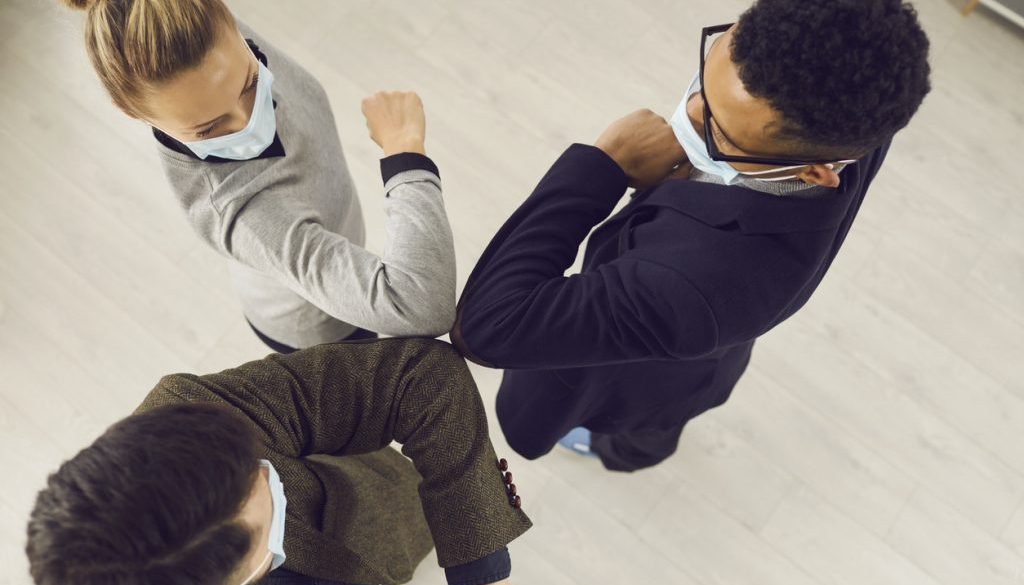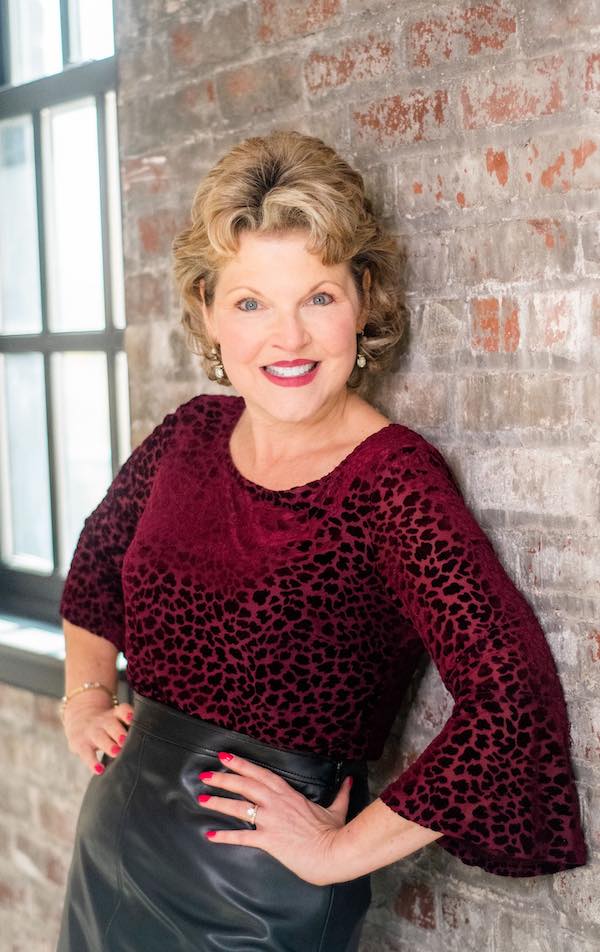Should We Fist Bump, Bow, or Shake Hands?

After the long pandemic hiatus from in-person gatherings, I recently attended a few professional events with people in attendance at large venues. It was delightful to see colleagues face-to-face whom I had only communicated with via Zoom after almost 2 years. Some people I met in-person for the very first time since our entire professional interaction to date had been virtual. And of course, there were new acquaintances to meet and greet.
In addition to re-acclimating to how we hold our personal space in an in-person conversation, I discovered how tall people are and experienced their professional presence, which is not captured with any justice on Zoom. It was joyful and liberating to be in-person but admittedly awkward as well.
To Shake, or Not to Shake
As I greeted people – old friends and new connections, there was a beautiful awkwardness in how we initiated the salutation. I found myself pausing to gauge the reaction of the person whom I was greeting. Do I extend my hand, offer a fist bump, or politely bow to acknowledge them?
Some well-known colleagues went in for a bear hug or a handshake without hesitation and some remained masked to honor their comfort level in an endemic world and avoided contact. I was not the only one experiencing the hesitation about how to act – it became a topic of conversation at both events. What’s the professional etiquette for the new abnormal?
Honor Your Comfort Zone
Allie Volpe wrote a great piece in the New York Tines and shared how physical greetings are a hard habit to break.
“A greeting is an action, and action has a message,” said Andy Molinsky, a professor at the International Business School at Brandeis who wrote the book “Global Dexterity: How to Adapt Your Behavior Across Cultures Without Losing Yourself in the Process.” “When you hug someone and give them a tight squeeze, you might be saying ‘I miss you.’”
Interpreting these gestures is an emotional shorthand that has allowed humans to convey a lot while saying little. The handshake, for instance, can be used as an introduction, a show of sportsmanship and a peace offering, and its earliest known depictions are in artwork dated to the ninth century B.C.
In those early days, handshakes signaled that the parties involved were unarmed, said Patti Wood, a body language and human behavior expert who wrote the book “Snap: Making the Most of First Impressions, Body Language and Charisma
It’s important to honor your comfort level as well as the person you are greeting as you determine how you will engage with people in the new endemic world.
Safety Rules
While mask mandates have been dropped, it’s important to recognize than many still choose to wear a mask. We must honor these unique decisions and treat others with dignity and respect. As I sat in a crowded break-out session room feeling like a sardine in a can with no personal space, I noticed that several people donned a mask to mitigate the germ sharing and create a personal safety zone at one conference I attended recently.
For many years, I have provided executive coaching and consulting services for companies in the medical, pharmaceutical, and healthcare fields. Long before Covid, many of these professionals greeted me with an elbow bump instead of a handshake because it is a more hygienic option.
Safety in hospitals, hygienic manufacturing plants, and medical practices was top of mind well before the pandemic and this simple greeting adjustment made good sense and lessened the germ sharing that is ubiquitous when humans interact.
The New Greeting Etiquette
So, what are the norms as we navigate this new endemic journey and begin to interact with people – real people, and not just a Zoom screen? Here are some ideas that will give you choices to meet your comfort level.
- Approach a personal greeting with caution and an open mind. Don’t assume that the person you are greeting is comfortable with your preferred style of salutation.
- Keep your personal distance to a few feet to help gauge the comfort zone of the person you are greeting, and to establish your personal space.
- Start by asking: “May I shake your hand, give you a hug, etc.” – relevant to what you prefer. This is also a good time to share what you wish: “I’m comfortable with a hug and it’s great to see you.” Asking permission and providing clarity of expectations is the most appropriate and will honor both parties.
- The elbow bump has the least amount of skin-to-skin contact (if both parties are wearing long sleeves) while the fist bump has less contact than a full handshake. Play around with what feels best for you.
- Many Asian cultures initiate a greeting with a slight bow at the waist. It’s a sign of honor, respect, and recognition for the person you are greeting and assures personal space between the parties. This greeting is becoming more mainstream.
- The hug breaks the boundaries of personal space but can be welcomed by many, especially after such a long tine apart. It’s essential to ask for permission since an unwanted hug is never appropriate – endemic or not.
- The palm-show cue according to anthropologist, David Givens is a “no fear greeting” that works in all cultures. Simply bend your right forearm along your side and display your open palm. This “I come in peace” gesture is welcoming and contactless.
Give Grace
The post-pandemic awkwardness of greetings in-person is universal and illustrates the common denominator that we are all human. Give yourself and others grace as you figure out how to behave again in public. The awkward moments keep it real and illustrate our humility as we develop new social norms. Enjoy the opportunity to gather with people again and the fun realization about the height of your Zoom colleagues, whom you have only known on the screen. We are all figuring this out together.






